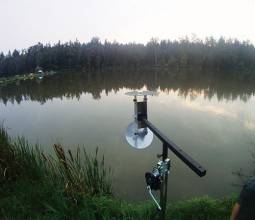Q: How does signal acquisition with batch processing (i.e., FFTs) work? How is it different from traditional serial search techniques?
A: In order to answer these questions, let us briefly review the serial-search acquisition process.
Q: How does signal acquisition with batch processing (i.e., FFTs) work? How is it different from traditional serial search techniques?
A: In order to answer these questions, let us briefly review the serial-search acquisition process.
Numerically controlled oscillators (NCOs) drive the so-called "local" code and carrier generators (recall that in order to track the signal, the receiver must generate local copies of the code and carrier and must synchronize them with the received signal). The locally generated code and carrier signals are multiplied with the received signal (which itself has been amplified, filtered, down-converted in frequency and digitized with an analog-to-digital or A/D converter), and the results are then accumulated (discrete-time equivalent of integration).
In order to account for the as yet unknown phase of the received signal, the locally generated carrier is broken into two components, which are phase-shifted by 90 degrees with respect to each other. These two orthogonal signals, after multiplication with the received signal and local code, and subsequent accumulation, are referred to as the in-phase (I) and quadrature or quadraphase (Q) components. The code-lock detector then is given simply by the sum of the squares of the I and Q components:
Code_Lock_Detector = I2 + Q2
(For the rest of Michael Braasch’s answer to this question, please download the complete article using the PDF link above.)
Q: Why do GNSS Systems Use Circular Polarization Antennas?
A: GNSS systems generally use right hand circular polarization (RHCP) antennas. Why not vertical polarization or horizontal polarization? After all, linear polarized antennas are easier to build.
Perhaps the most basic motivation is that circular polarizations are more tolerant of physical orientation mismatches. As an example: if we transmit using a vertically oriented whip antenna (vertical polarization) and use a similar antenna for reception, we would see a strong signal if the antenna is vertically oriented. But take the receive antenna and lay it on its side (90 degree rotation), and the signal strength will go down by 20 decibels or more, because we are now trying to receive a vertically polarized signal with a horizontally polarized antenna.
A circular polarized antenna can be built using two antennas: a horizontal polarization antenna and a vertical polarization antenna with the outputs from each added together with a 90 degree phase shift. The relative phasing of the addition determines whether we have constructed an RHCP antenna or a left hand circular polarization (LHCP) antenna.
(For the rest of Logan Scott’s answer to this question, please download the complete article using the PDF link above.)


